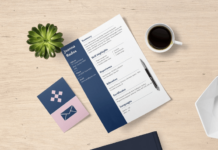In today’s competitive job market, securing your dream position requires more than just sending out resumes and hoping for the best. To stand out and increase your chances of success, you need to master effective application strategies.
In this article, we’ll unveil seven proven techniques tailored for 2023 job seekers that will empower you to navigate the hiring landscape confidently and precisely.

Strategy 1: Tailoring Your Resume
A tailored resume is essential because it demonstrates to potential employers that you’ve aligned your qualifications with their specific job requirements, increasing your chances of getting noticed and making a solid first impression.
Tips for Customizing Your Resume
Customizing your resume is crucial for landing your desired job. Here are five tips to help you tailor your resume effectively:
- Review the Job Description: Carefully analyze the job posting to identify critical skills and qualifications the employer is seeking.
- Match Keywords: Incorporate relevant keywords from the job description into your resume to align with the employer’s expectations.
- Highlight Achievements: Showcase your relevant achievements and experiences that directly relate to the job you’re applying for.
- Adjust Your Summary/Objective: Tailor your resume’s summary or objective statement to emphasize your suitability for the role.
- Quantify Your Impact: Use quantifiable data and metrics to illustrate the results you’ve achieved in previous positions, making your accomplishments more compelling.
Examples of Successful Resume Tailoring
Tailoring your resume is a crucial step in securing the job you desire. Here are five concise examples of successful resume tailoring:
- Job-Specific Skills: Highlight proficiency in required software or tools.
- Relevant Certifications: Showcase applicable certifications prominently.
- Keyword Integration: Incorporate job-specific keywords into your resume.
- Quantifiable Achievements: Emphasize results directly related to the job.
- Customized Objective/Summary: Adjust your statement to match the role.
Strategy 2: Leveraging LinkedIn
Leveraging LinkedIn can significantly boost your career prospects. Here’s a concise guide on how to make the most of this professional networking platform:
- Building a Strong LinkedIn Profile: Create a compelling profile highlighting your skills, experiences, and achievements to make a solid first impression.
- Networking and Connecting with Professionals: Expand your network with colleagues, industry peers, and potential employers to foster valuable connections.
- Utilizing LinkedIn for Job Searches: Harness the power of LinkedIn’s job search tools and job postings to discover new career opportunities and engage with potential employers.
Strategy 3: Mastering the Cover Letter
Crafting a compelling cover letter is vital for capturing the attention of potential employers. Here are five essential tips to help you create an impactful cover letter:
- Personalize Your Salutation: Address the recipient by name to make your letter more personal and tailored.
- Start with a Strong Opening: Begin with a captivating introduction that hooks the reader’s interest and makes them want to learn more about you.
- Highlight Relevant Achievements: Focus on your most relevant achievements and experiences that directly align with the job you’re applying for.
- Convey Enthusiasm: Express genuine enthusiasm for the position and the company, demonstrating your passion for the role.
- Be Concise and Specific: Keep your cover letter concise and to the point, focusing on critical qualifications and avoiding unnecessary details.
Cover Letter Mistakes to Avoid
Avoiding common cover letter mistakes is essential to make a positive impression on potential employers. Here are five pitfalls to steer clear of when crafting your cover letter:
- Generic Content: Don’t use a one-size-fits-all approach; tailor your cover letter to each job application.
- Grammatical and Spelling Errors: Proofread carefully to eliminate any language mistakes that can detract from your professionalism.
- Excessive Length: Keep it concise and focused, avoiding lengthy paragraphs that may bore the reader.
- Repetition of Resume: Your cover letter should complement, not duplicate, your resume. Avoid restating information verbatim.
- Negative Language: Stay positive and avoid discussing negative experiences or reasons for leaving previous jobs in your cover letter.
Strategy 4: Researching Employers
Researching companies is a critical step in the job search process. Here are five valuable tools and resources to help you gather information about potential employers:
- Company Websites: Explore a company’s official website to access information about its mission, values, products, and recent news.
- LinkedIn: Utilize LinkedIn company pages to discover critical insights, such as employee reviews, company culture, and current job postings.
- Glassdoor: Visit Glassdoor to access employee reviews, salary information, and interview experiences, providing a comprehensive view of a company’s reputation.
- News Outlets: Consult news websites and industry-specific publications to stay updated on recent developments and trends within the company and its industry.
- Professional Networks: Connect with professionals in your network who have experience with or knowledge of the company to gain valuable firsthand insights.
Strategy 5: Crafting a Winning Elevator Pitch
Creating a concise and impactful pitch is essential for making a memorable impression in various professional settings. Here are the key steps to craft such a pitch:
- Clarify Your Purpose: Begin by clearly defining the purpose of your pitch, whether it’s introducing yourself, showcasing a project, or seeking opportunities.
- Identify Key Points: Determine the most essential points you want to convey and focus on them to avoid overwhelming your audience.
- Craft a Strong Opening: Start with an attention-grabbing opening that captivates your audience and sets the tone for your pitch.
- Use Clear and Concise Language: Keep your language simple and easy to understand, avoiding jargon or unnecessary complexity.
- Practice and Refine: Practice your pitch repeatedly, refining it with each iteration to ensure it flows smoothly and is well-timed.
Strategy 6: Maximizing Applicant Tracking Systems (ATS)
Getting your resume past Applicant Tracking Systems (ATS) is crucial for reaching recruiters and landing job interviews. Here are several effective strategies to help you navigate ATS successfully:
- Keyword Optimization: Carefully incorporate relevant keywords from the job description into your resume to match ATS criteria.
- Simplified Formatting: Use a clean and simple resume format without elaborate graphics or unusual fonts to ensure ATS can read your document.
- Appropriate File Format: Save your resume as a standard file format (e.g., PDF or Word) to ensure ATS compatibility.
- Customize for Each Job: Tailor your resume to match the specific job requirements of each application.
- Review and Edit: Thoroughly proofread your resume to eliminate errors that might confuse or trip up ATS algorithms.
Strategy 7: Following Up Effectively
Effective follow-up after submitting your job application is a crucial step in the hiring process. Here are some timely and professional methods to help you stay on the radar of potential employers:
- Email: Send a concise and polite email to express your continued interest in the position and inquire about the status of your application.
- LinkedIn Message: If you’re connected with a recruiter or hiring manager on LinkedIn, consider sending a professional message to reiterate your interest.
- Phone Call: If contact information is provided, a brief and respectful phone call can demonstrate your enthusiasm and commitment.
- Thank-You Note: After an interview, send a thank-you email or handwritten note to express gratitude and reiterate your interest.
- Follow-Up Timeline: Respect the application and interview timelines provided by the employer, ensuring your follow-up aligns with their expectations.
Final Thoughts on 7 Proven Job Application Strategies for 2023
In the 2023 job market, these seven proven application strategies are your path to success.
Tailor your resume, use LinkedIn effectively, write compelling cover letters, research companies, deliver impactful elevator pitches, optimize for ATS, and follow up professionally.
These strategies set you apart in a competitive landscape. Embrace them, adapt as needed, and confidently embark on your job search. Your dream job awaits.









